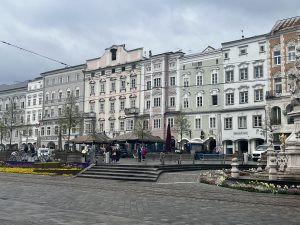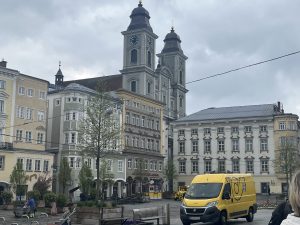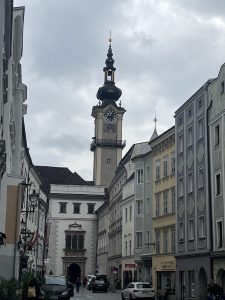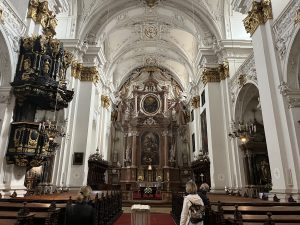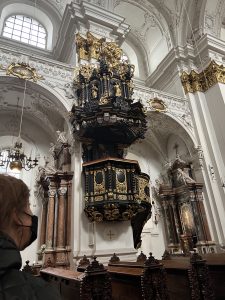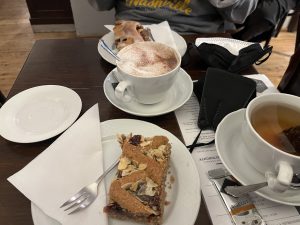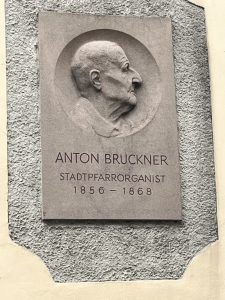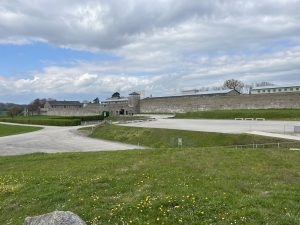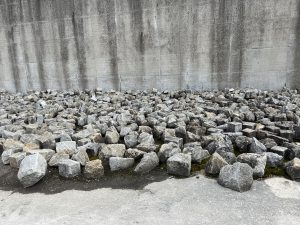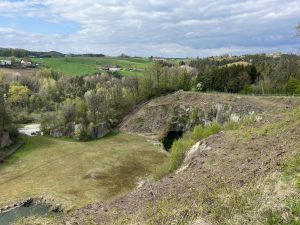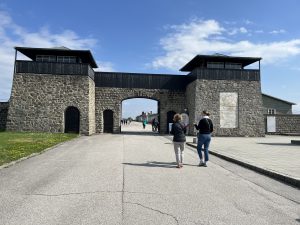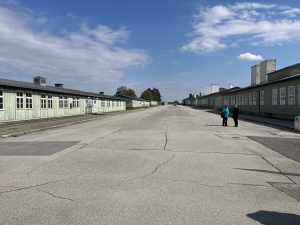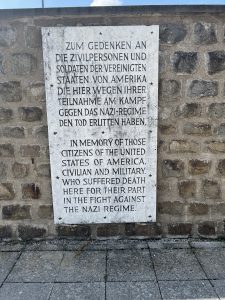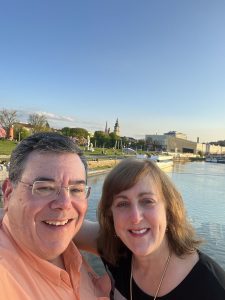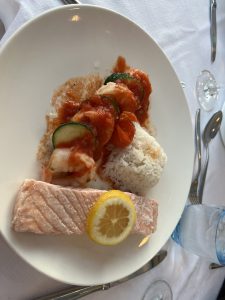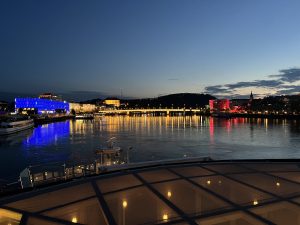Picture Gallery at the bottom of the Blog!
Our stop yesterday was Linz, Austria. On one hand, it is a lovely little town on the Danube filled with museums, universities (including Sigmund Freud U where, I suppose, one can learn that “sometimes a cigar is only a cigar”), and heavy industry – like a steel mill. On the other hand, the town, to use the phrase Art Spiegelman uses to describe his father in Maus, “bleeds history.” Famously it was where Hitler went to school and was one of the 5 designated “Fuhrer Cities” (along with Berlin, Hamburg, Nuremburg, and Munich) and was the planned sight for “Kultur und Kunst” where a massive museum to hold all the art he had sacked from across Europe was to be displayed. Linz was where he planned to “retire” and high up on the hill where a massive church is located is where he wanted a mausoleum for he and his parents to be buried. And the steel mill? It was built during the war and originally called the Herman Goering factory. If you have a Mercedes, Audi, Porsche, or BMW in the garage there’s a good chance you have some steel from that factory too.
Knowing much of this history before we began our walking tour I found it difficult to overly engaged in the guides explanation of the famous Linzer Torte…though we did a sample at a bakery that has been in operation since the mid-1500’s.
All the focus on the town in the morning was good preparation for our afternoon excursion – a tour of the concentration camp Mauthausen which is now a memorial. Situated along the Rhine about 20km from Linz, surrounded by some of the most stunning rolling farmland, it is next to a rock quarry and known for the “Stairs of Death.” Prisoners were forced to carry roughly-hewn blocks of stone – often weighing as much as 110lbs – up the 186 stairs, one prisoner behind the other. I have known about Mauthausen through study for years, but specifically through Wendy Holman’s remarkable book, Born Survivors: Three Young Mothers and Their Extraordinary Story of Courage, Defiance, and Hope (about 3 children born to Jewish women in the camps and how they survived – one ultimately lived in Nashville, TN) and the fascinating Netflix documentary, The Photographer of Mauthausen (a 2018 doc about a Spanish prisoner/photographer who managed to make duplicates of photos for the camp commandant and smuggled them out). I have visited Dachau and Buchenwald on past trips and read a detailed history of Ravensbruck – the women’s camp – so have context but seeing the gas chambers and crematoria was new and disturbing for Amy. As she acknowledged when we got back on the bus, “This happened only 15 years before you were born.” The camp was liberated in May of ’45 by US Army units. Seeing the end product of a totalitarian regime, where it can lead when checks and balances come off of government, and man’s inhumanity to man, the inability to see all created in the Creator’s image, and value the “other” as a child of God, makes one weep. Through the tears I’m glad we went. We were surrounded by German school children who learn their history instead of ignoring it. The US needs to take a lesson in how to confront the collective sins of our racial past instead of pulling books from the shelves and not allowing the full history to be taught in the classroom. Confession of sin (individual and collective) is necessary for repentance. Ignoring it or denying it leads to ruin.
